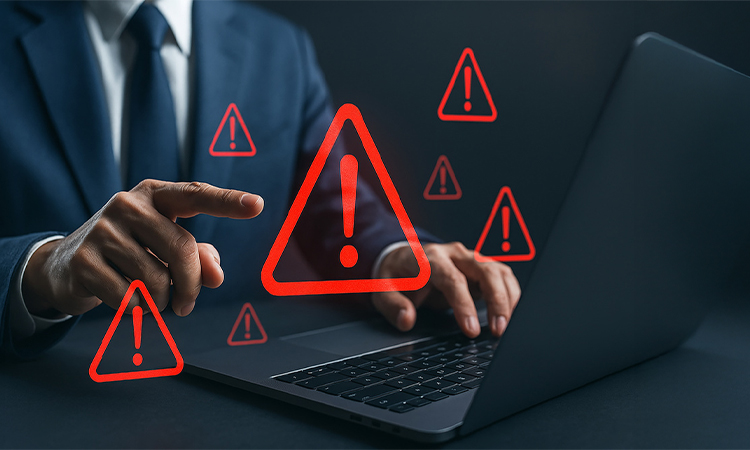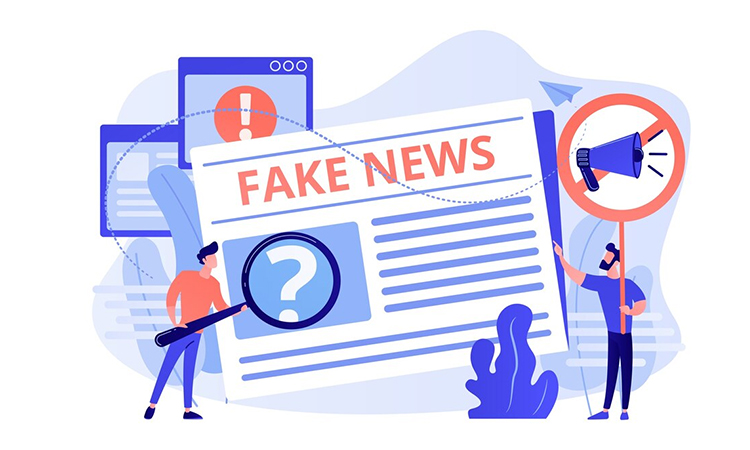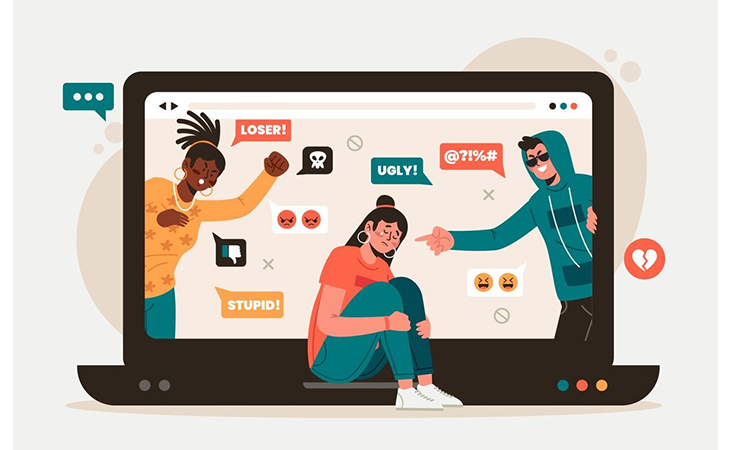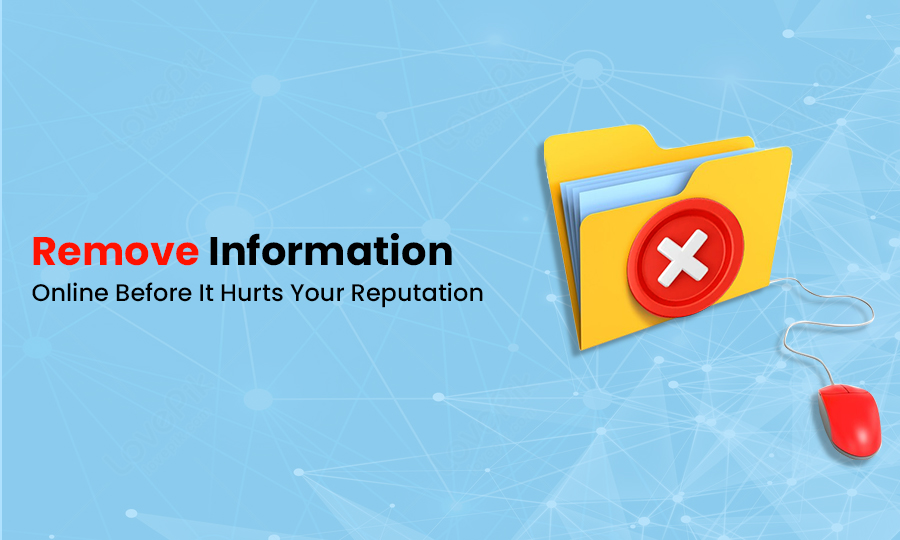As the market evolves with the engagement of new practices and demands, it becomes challenging for companies to maintain business reputation with strategic practices and advanced policies.
Research shows that more than 90% of customers are deeply motivated by positive reviews of businesses available on digital platforms, while 86% tend to recommend products and brands to their families and friends as on their online reviews and brand reputation.
However, the search results may not show positive outcomes to consumers, affecting business practices and reputation by reducing customer engagement on a significant scale. Removing harmful and sensitive personal information, in this regard, plays a key role in empowering business ideas and potential with increasing customer engagement and stakeholder values.
Types of Harmful Online Information
As online information has been an integral part of modern business, companies focus on using digital tools and techniques to ensure business reputation and practices. However, in some cases, the information is harmful in nature, affecting brand values and business programmes.
Here are some different types of harmful online information.
- Misinformation

It creates disputes in customer-company relationships, as misinformation leads to false ideas about products, services or companies for customers.
The data collected by consumers before purchasing any product or pursuing services might involve misinformation, demotivating customers and affecting their purchasing decisions, which further affects the collective growth of business and market reputation.
Let’s take two different examples.
- Example 1: If you sell a food product with a particular nutritional value, but your branding message or marketing content includes some other vitamins, the customers will not rely on your brand.
- Example 2: Fake news leads to remarkable fluctuations in the stock price of a company, which causes economic losses for the company and its investors.
On the other hand, misinformation delays the launch of new services and products, as the loss of trust and customer loyalty affects organisational acceptance. Moreover, it may also lead to financial losses, such as stock market fluctuations and increasing crisis management costs, as organisations come across difficulties regarding stock-selling and public image-restoring.
- Disinformation

It remains a key threat to organisational reputation, as disinformation leads to disputes regarding brand identity and organizations.
In the case of disinformation, the information is deliberately misguided and shared falsely, which is alarming for the customer-company relationship, affecting the corporate growth of companies and increasing the possibilities of data breaches.
For example, a forged departmental memo based on the US Defense fueled a concern regarding national security, as it claimed the acquisition of a tech company by another semiconductor-producing organisation.
Disinformation affects the business reputation of companies, due to the lack of customer engagement and market-based practices, as the market-oriented approaches fail to create a reliable market impression.
- Hate Speech

The global market includes people of different ethnicity, cultures, religions and faiths. In this regard, it is a responsibility for a brand not to hurt anyone’s sentiment, intentionally or unintentionally, involving any personal details, leading to stakeholder and ethical issues .
For example, if your brand starts talking against a particular faith, religious communities or race, it questions your ethical integrity and sense of cultural values.
Eventually, the hate speech issue can fuel a mass against your brand, despite your previous public records and ethical services. On the other hand, any personal bias from the company CEO or any other administrative head can also spark a debate regarding your brand’s authenticity. Any kind of available private information, such as the social media ID of personnel, may affect the collective growth of your brand and brand recognition.
- Cyberbullying and Harassment

Research shows that 48% of US adults identified cyberbullying as a major problem on Twitter (Now X).
As cyberbullying has become a significant issue in today’s digital world, leaking contact details and the involvement of data brokers have challenged the security of individuals. However, it can also be a major issue for your brand if any team member is involved.
For example, if any one of your team members from the corporate group gets exposed and accused of cyberbullying, their professional IDs are more likely to be identified, affecting the business reputation.
If you run a well-known MNC, the Google search results may show news or article links of the incident, leading to reputational damage on a significant scale. On the other hand, bullying someone based on their personal info can also lead to challenges and allegations of harassment.
- Fake Reviews and Endorsements

Despite reliable strategies and technological approaches from a website owner, companies and products experience fake reviews, affecting consumers’ purchasing decisions and ideas regarding products and services.
Research shows that the global market experiences a loss of $152 billion due to the threats regarding fake reviews.
Fake reviews are mostly observed in different review and search sites, which can be identified through fake profiles and repetitive use of words.
For example, product P has received 6 reviews on TrustPilot, but 2 of them are simply “very good” and “very bad.” These reviews are more likely to be fake, as they do not provide any reliable insight into the product.
The engagement of data brokers and the lack of data removal processes lead to challenges, such as vague ideas regarding products, which significantly affect purchasing decisions.
How to Identify Harmful Content?
The identification of harmful content is essential, as they affect business reputation and market engagement. Here are some strategies to identify harmful content.
- Understand the Types of Harmful Content Affecting Digital Footprint
The data brokers and their regular engagement in digital platforms affect business content, shared for marketing and other purposes. Despite the enhanced use of data removal requests and protecting business bodies and personnel from identity theft, brands face backlash from corporate mismanagement and challenges.
You need to identify the information available in people search sites affecting customers’ approach towards your brand or products, while the misinformation can also be found at your digital home address. You should identify the fake reviews or fake news about your brand through market analysis and the removal requests must be examined before any strategic actions.
- Evaluate the Source and Intent
Remember two things.
- The corporate concept of the market is not stagnant, and identity theft can solely destroy your market reputation and opportunities.
- The availability of unnecessary personal info can be used against you and your brand, leading to corporate disputes and losses.
In this regard, you need to identify and evaluate the sources of fake news, misinformation or hate speech. The exposed data is required to be critically analysed to identify the misinformation or disinformation affecting your brand value, business reputation and customer engagement on a significant scale.
You cannot remain on the same page.
- For example, if you face challenges regarding fake reviews or news at two different times, it does not mean that their sources are identical. As the market evolves and challenges the dark web and search engines become a key threat to brand reputation programmes, you cannot expect fake news or reviews from the same sources.
- Secondly, your brand might come across some personal biases, affecting its digital footprint, as they generate fake reviews or disinformation. In most cases, sharing disinformation and misinformation comes from a lack of ethical knowledge, creating corporate dilemmas and issues regarding customer engagement.
- Look for Red Flags for Data Privacy
Red flags regarding data privacy include organisational failure based on an understanding of security, managerial vulnerability, a comprehensive security programme and cost-saving practices. Apart from it, excessive data collection practices by using tracking tools, such as web beacons and cookies and vague privacy policies question data privacy of a company.
Two key facts to remember:
- Organisations without any understanding of security breaches are some major red flags, while those that do not proactively address vulnerability approaches are at corporate risk.
- A lack of comprehensive security, such as a Vulnerability Disclosure Program (VDP), indicates insufficient data protection.
However, you need to identify the risk factors and potential risk factors that may affect your brand’s data privacy. You can conduct internal environment analysis, using tools like SWOT or TWOS, through which you can improve your data removal policies and identify data brokers.
- Use Tools and Filters to Protect Personal Information
With the advent of the 21st century, the use of tools and techniques has increased to identify data brokers to eliminate personal information search engines.
Although privacy policies are complex to understand and lack transparency, by using several tools and techniques, the removal process may benefit and personal information can be removed from search engines.
- VPNs (Virtual Private Network): VPNs encrypt website traffic and prevent hackers and third parties from getting access to personal information. By using it, you can also protect your personal information, such as address, phone numbers, financial data, IDs and others, from any kind of digital malevolence.
- Password Managers: Using password managers is effective in protecting personal information from unwanted dark web engagement and other data brokers.
- Two-Factor Authentication (2FA): A research report expects that by 2025, the multi-factor authentication market will reach $17.76 billion. Apart from enabling 2FA for ensuring security, you can use antivirus software to protect your personal information, while firewalls are advantageous to protect personal information, such as addresses, email IDs and phone numbers from unauthorised access.
Steps to Remove Information Online
Removing online information empowers business bodies in creating brand credibility and business programmes, as personal or harmful content may affect the collective values of companies on a significant scale.
Here are some important steps to remove online information!
- Remove Unused Software and Accounts for Online Privacy
Social security numbers and web engagement play a key role in ensuring the online privacy of personal information and brand management.
To remove online information, you need to eliminate unused software and accounts that are no longer effective in communicating and data exchange. As third-party interactions affect data security and search results, you should address the issues regarding unused software and accounts, which are often used by outsiders to access personal information.
Users should deactivate their unused accounts to delete personal information and address further challenges to ensure brand reputation and reputation monitoring.
- Remove Unwanted Information from Google to Stop Identity Theft
Google is the primary search engine people use to find information regarding a person, as the search engine results comprehensively show data and information.
To remove personal information from Google, you can consider these two strategies to reduce the threats of data misuse and misinterpretation.
- You can consider an online form to request the removal of your personal info, such as phone numbers, addresses and IDs from search reports. You need to follow the guidelines by Google to remove irrelevant and outdated images and content from different websites. You can also ensure limited availability of data according to your choice and personal details, while you can also delete content or information that can be exploited by data brokers and request removal of personal data.
- You should further monitor search results regarding your sensitive personal information or name. You may repeatedly follow this strategy to delete personal information, personally identifiable information and details regarding your activities.
- Review Privacy Settings on Social Media Accounts
The social media platforms store a large amount of personal information.
In this regard, you should review your online accounts and social media platforms to ensure better privacy settings. You should also adjust the visibility of your personal data, posts and photos as per your comfort level; better, if you limit access to your profile and posts to only the people you trust and rely on.
You must be careful about your posts (images or videos), so that you do not share any sensitive information that may harm your personal or professional practices.
Apart from it, you should also remove your personal details, such as your phone number or home address, which can be used against you by any third-party engagement.
- Removing Access Requests from Third-Party Websites and Data Brokers
Data brokers and third-party websites collect and sell personal information, ensuring its availability to anyone if they pay enough.
You can request to remove your data from data brokers and identify websites, list your personal data, to contact them to delete personal data and records. You can also use automated tools and services to monitor the data broker list to ensure personal data.
However, removing personal data for once may not be enough, as brokers may re-upload it. In this regard, you should remove personal information and data more effectively by monitoring the internet for web threats, while you can address the challenges with the use of tools and techniques, like VPNs, 2FAs and password managers.
- Optimising Browser Privacy and Using Anti-tracking Tools
You must disable third-party cookies and ensure that your online behaviour is not widely accessible and limit personalised advertisements. It would decrease the amount of data collected from your browsing. To remove personal information, you can delete your Google history to maintain privacy by removing records of the websites. It will eventually help you to protect your personal data from being tracked by advertisers and websites.
You should delete your browser extensions, as they can access your data through the internet, including personal information and browsing activities. Third parties and hackers may exploit your search history and personal data, while using tools to block internet trackers is advantageous to protect personal information. For example, NordVPN, a reliable tracker blocker, can be used to protect data from misuse of data and personal information.
- Monitoring and Protecting Identity and Personal Data
You should subscribe to relevant identity monitoring services, as detecting unauthorized use of your personal details can be a threat to your online presence. The challenges that emerge from dark web engagement and other data brokers can be addressed through these services, as they alert to suspicious activities, affecting one’s personal data and credit report.
Using passwords is important to protect your personal data from third-party engagement, as they ensure the security of personal records, such as property titles, court records or any other personal data available on your website’s home address. Personal data, such as phone number, home address and others, available on online sources, can be protected from external threats.
Conclusion
The data is everything.
Keeping this in mind, you should make removal requests regarding sensitive and personal information from public platforms, so that you can ensure your safety, as well as, of your files.
As social media accounts and website browsing store history, you should be careful about your privacy settings. You need to be careful about the availability of your personal details, so that data brokers cannot affect your privacy or that of your business.
The safety process is complex in nature. In that case, you should use several tools and techniques, such as 2FA and VPNs, and must submit your complaints to the authorities bodies of experience a third-party invasion.
However, you must secure your posts from strangers and make them available to persons you trust. It may not be enough. In that case, you must have strict control over your personal details, whether they are to be made private or removed.Lastly, if you cannot remove personal information from digital platforms, you can hire agencies for content removal programs to ensure your safety.
Additional Resources:
- Step-by-Step Guide: Remove Your Personal Information from Internet
- How to Handle a Negative Review: A Step-by-Step Guide for Businesses

